Geekflare is supported by our audience. We may earn affiliate commissions from buying links on this site.
SEO Log File Analysis help understand the crawler’s behavior on the website and identify potential technical SEO optimization opportunities.
SEO without analyzing the crawlers’ behavior is like flying blind. You may have submitted the website on Google search console and indexed it, but without studying the log files, you won’t get an idea if your website is getting crawled or read by search engine bots properly or not.
That’s why I have assembled everything you need to know to analyze SEO log files and identify issues and SEO opportunities from them.
What is Log Files Analysis?
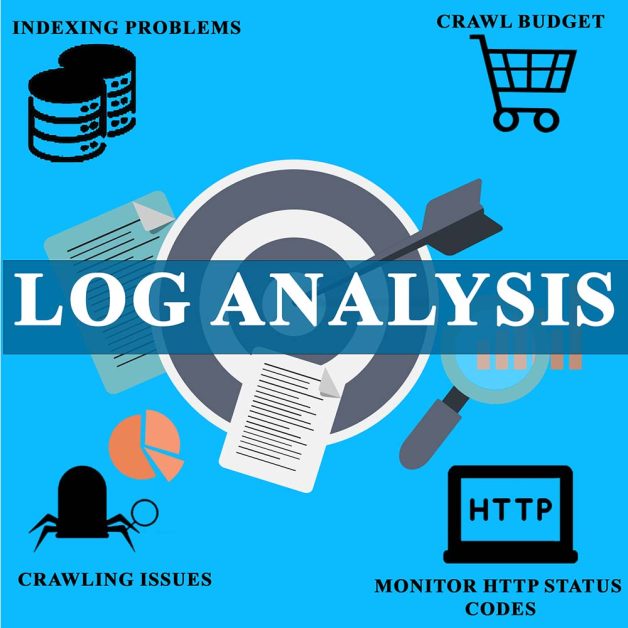
SEO Log Files Analysis is a process to recognize the pattern of search engine bots’ interaction with the website. Logfile analysis is a part of technical SEO.
Log files auditing is important for SEOs to recognize and resolve the issues related to crawling, indexing, status codes.
What are Log Files?

Log files track who visits a website and what content they view. They contain information about who requested access to the website (also known as ‘The Client’).
The information perceived can be related to search engine bots like Google or Bing or a website visitor. Typically, log file records are collected and maintained by the site’s web server, and they are usually kept for a certain amount of time.
What does Log File Contain?

Before knowing the importance of log files for SEO, it’s essential to know what’s there inside this file. The log file e contains the following data points:-
- Page URL which the website visitor is requesting
- The HTTP status code of the page
- Requested server IP address
- Date and time of the hit
- Data of the user agent (search engine bot) making a request
- Request method (GET/POST)
Log files can seem complicated to you if you look at them first. Still, once you know the purpose and importance of log files for SEO, you will use them effectively to generate valuable SEO insights.
Purpose of Log Files Analysis for SEO
Logfile analysis helps resolve some of the important technical SEO issues, which allows you to create an effective SEO strategy to optimize the website.
Here are some SEO issues which can be analyzed using log files:
#1. Frequency of Googlebot crawling the website
Search engine bots or crawlers should crawl your important pages frequently so that the search engine knows about your website updates or new content.
Your important product or information pages should all appear in Google’s logs. A product page for a product that you no longer sell, as well as the absence of any of your most important category pages, are indicators of a problem that can be recognized using log files.
How does a search engine bot utilize the crawl budget?
Each time a search engine crawler visits your site, it has a limited “crawl budget.” Google defines a crawl budget as the sum of a site’s crawl rate and crawls demand.
Crawling and indexing of a site may be hampered if it has many low-value URLs or URLs that are not correctly submitted in the sitemap. Crawling and indexing key pages is easier if your crawl budget is optimized.
Logfile analysis helps optimize the crawl budget that accelerates the SEO efforts.
#2. Mobile-first indexing issues and status
Mobile-first indexing is now important for all websites, and Google prefers it. Logfile analysis will tell you the frequency with which smartphone Googlebot crawls your site.
This analysis helps webmasters to optimize the webpages for mobile versions if the pages are not being correctly crawled by smartphone Googlebot.
#3. HTTP status code returned by web pages when requested
Recent response codes our webpages are returning can be retrieved either by log files or using the fetch and render request option in Google Search Console.

Log files analyzers can find the pages with the 3xx, 4xx, and 5xx codes. You can resolve these issues by taking the appropriate action, for example, redirecting the URLs to the correct destinations or changing 302 staus coded to 301.
#4. Analyzing the crawl activities like crawl depth or internal links
Google appreciates your site structure based on its crawl depth and internal links. Reasons behind improper crawling of the website can be bad interlink structure and crawl depth.
If you have any difficulties with your website’s hierarchy or site structure, or interlink structure, you may use log file analysis to find them.
Logfile analysis helps optimize the website architecture and interlink structure.
#4. Discover Orphaned Pages
Orphaned pages are the web pages on the website which are not linked from any other page. It is difficult for such pages to get indexed or appear in search engines as they are not easily discovered by bots.
Orphaned pages can be easily discovered by crawlers like Screaming Frog, and this issue can be resolved by interlinking these pages to the other pages on the website.
#5. Audit the Pages for Page Speed and Experience
Page experience and core web vitals are officially the ranking factors now, and it is important now that webpages are compliant with Google page speed guidelines.
Slow or large pages can be discovered using log file analyzers, and these pages can be optimized for page speed that will help overall ranking on the SERP.
Log File Analysis helps you gain control over how your website is crawled and how search engines are handling your website
Now, as we are clear with the basics of log files and their analysis, let’s look at the process of auditing the log files for SEO
How to do Log File Analysis
We have already looked at different aspects of log files and the importance of SEO. Now, it’s time to learn the process of analyzing the files and the best tools to analyze the log files.
You will need access to the website’s server log file to access the log file. The files can be analyzed in the following ways:
- Manually using Excel or other data visualization tools
- Using the log file analysis tools

There are different steps involved in accessing the log files manually.
- Collect or export the log data from the webserver, and the data should be filtered for the search engine bots or crawlers.
- Convert the downloaded file into a readable format using data analysis tools.
- Manually analyze the data using excel or other visualization tools to find SEO gaps and opportunities.
- You can also use filtering programs and command lines to make your job easy
Manually working on files’ data is not easy as it requires knowledge of Excel and involves the development team. Still, tools for log file analysis make the job easy for SEOs.
Let’s look at the top tools for auditing the log files and understand how these tools help us analyze the log files.
Screaming Frog Log File Analyzer
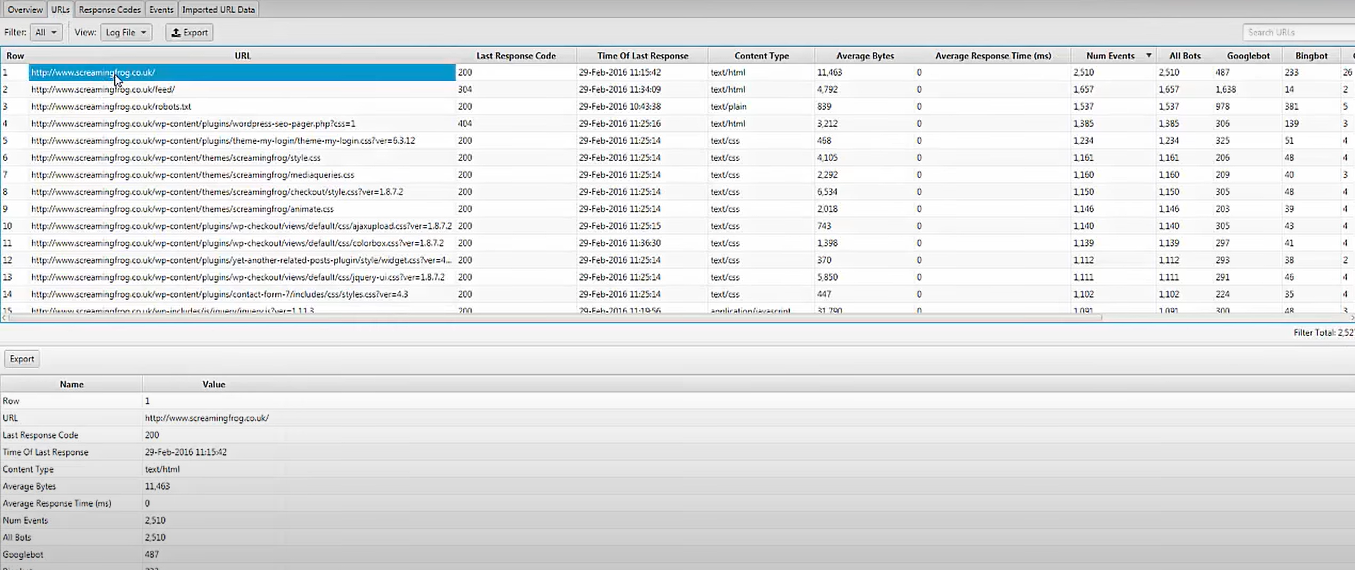
Technical SEO problems can be identified using uploaded log file data and search engine bots verified using the Screaming Frog Log File Analyzer. You can also do as follows:
- Search engine bot activity and data for search engine optimization.
- Discover the website crawl frequency by search engine bots
- Find out about all of the technical SEO issues and external & internal broken links
- Analysis of URLs that have been crawled the least and the most to reduce loss and increase efficiency.
- Discover pages that aren’t being crawled by search engines.
- Any data can be compared and combined, that includes external link data, directives, and other information.
- View the data about referer URLs
Screaming Frog log file analyzer tool is completely free to use for a single project with a limit of 1000 line log events. You’ll need to upgrade to the paid version if you want unlimited access and technical assistance.
JetOctopus
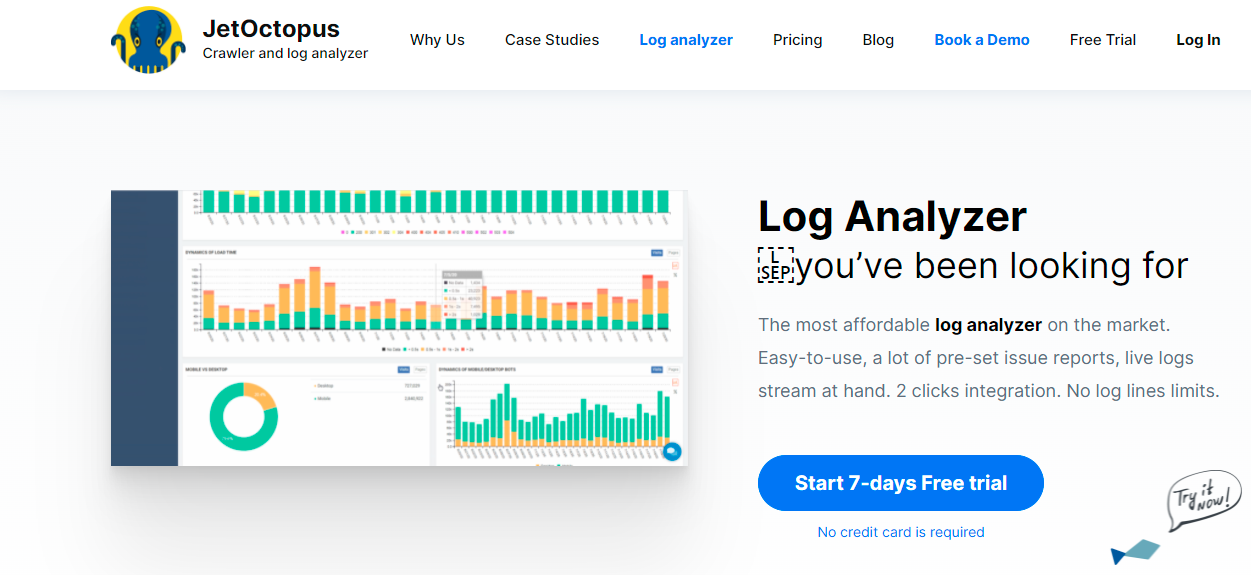
When it comes to affordable log analyzer tools, JetOctopus is best. It has a seven-day free trial, no credit card required, and a two-click connection. Crawl frequency, crawl budget, most popular pages, and more may all be identified using JetOctopus log analyzer, just like the other tools on our list.
With this tool, you can integrate log file data with Google Search Console data, giving you a distinct advantage over the competition. With this combo, you’ll be able to see how Googlebot interacts with your site and where you may improve.
On Crawl Log Analyzer
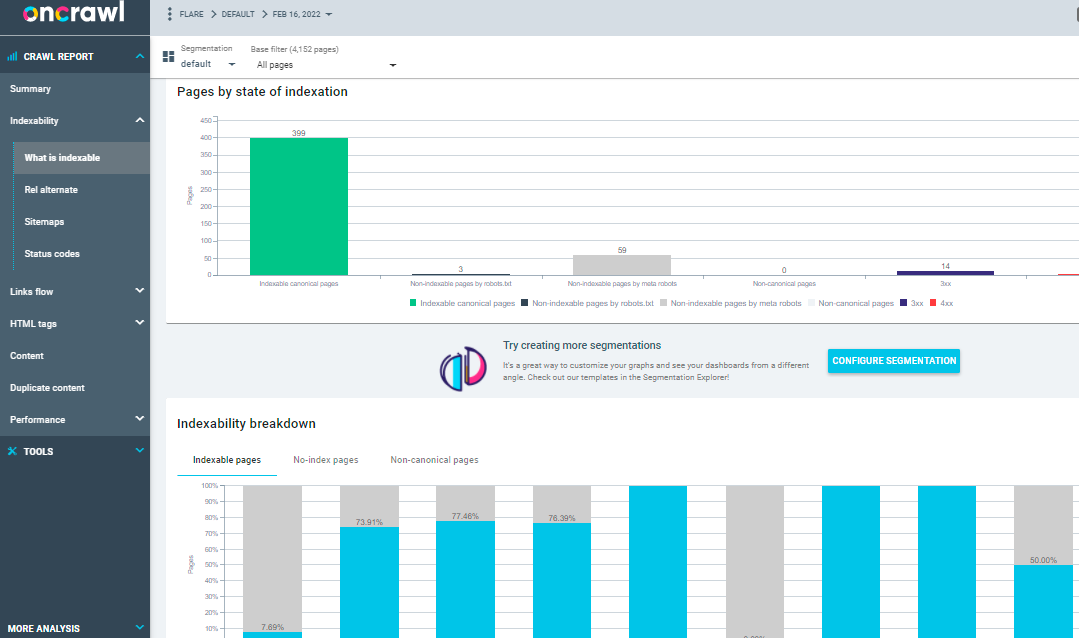
Over 500 million log lines a day are processed by Oncrawl Log Analyzer, a tool designed for medium to big websites. It keeps an eye on your web server logs in real-time to ensure your pages are being properly indexed and crawled.
Oncrawl Log Analyzer is GDPR-compliant and highly secure. Instead of IP addresses, the program stores all log files in a secure and segregated FTP cloud.
Besides JetOctopus and Screaming Frog Log File Analyzer, Oncrawl has some more features, such as:
- Supports many log formats, such as IIS, Apache, and Nginx.
- Tool easily adapts to your processing and storage requirements as they change
- Dynamic segmentation is a powerful tool for uncovering patterns and connections in your data by grouping your URLs and internal links based on various criteria.
- Use data points from your raw log files to create actionable SEO reports.
- Log files transferred to your FTP space can be automated with the help of tech staff.
- All the popular browsers can be monitored, that includes Google, Bing, Yandex, and Baidu’s crawlers.
OnCrawl Log Analyzer has two more important tools:
Oncrawl SEO Crawler: With Oncrawl SEO Crawler, you can crawl your website at high speed and with minimal resources. Improves the user’s comprehension of how ranking criteria affect search engine optimization (SEO).
Oncrawl Data: Oncrawl data analyzes all the SEO factors by combining data from the crawl and analytics. It fetches the data from the crawl and log files to understand the crawl behavior and recommends the crawl budget to priority content or ranking pages.
SEMrush Log File Analyzer
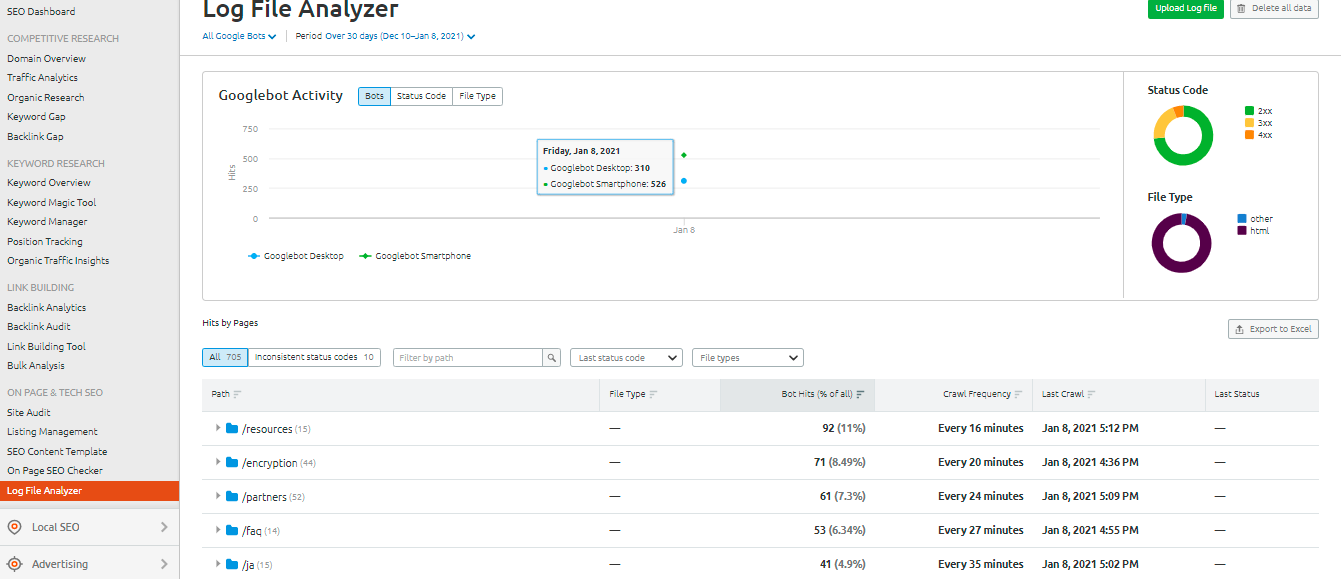
The SEMrush Log File Analyzer is a smart choice for a straightforward, browser-based log analysis tool. This analyzer does not require downloading and can be used in the online version.
SEMrush presents you two reports:
Pages’ Hits: Pages’ Hits reports the web crawlers’ interaction with your website’s content. It gives you the data of pages, folders, and URLs with the maximum and minimum interactions with bots.
The activity of the Googlebot: The Googlebot Activity report provides the site related insights on a daily basis, such as:
- The types of crawled files
- The overall HTTP status code
- The number of requests made to your site by various bots
Loggly from SolarWinds

SolarWinds’ Loggly examines the access and error logs of your web server, as well as the site’s weekly metrics. You can see your log data at any point in time, and it has features that make searching through logs simple.
A robust log file analysis tool like SolarWinds Loggly is required to efficiently mine the log files on your web server for information about the success or failure of resource requests from clients.
Loggly can provide charts displaying the least commonly viewed pages and compute average, minimum, and maximum page load speeds to assist you in optimizing your website’s search engine optimization.
Google Search Console Crawl Stats
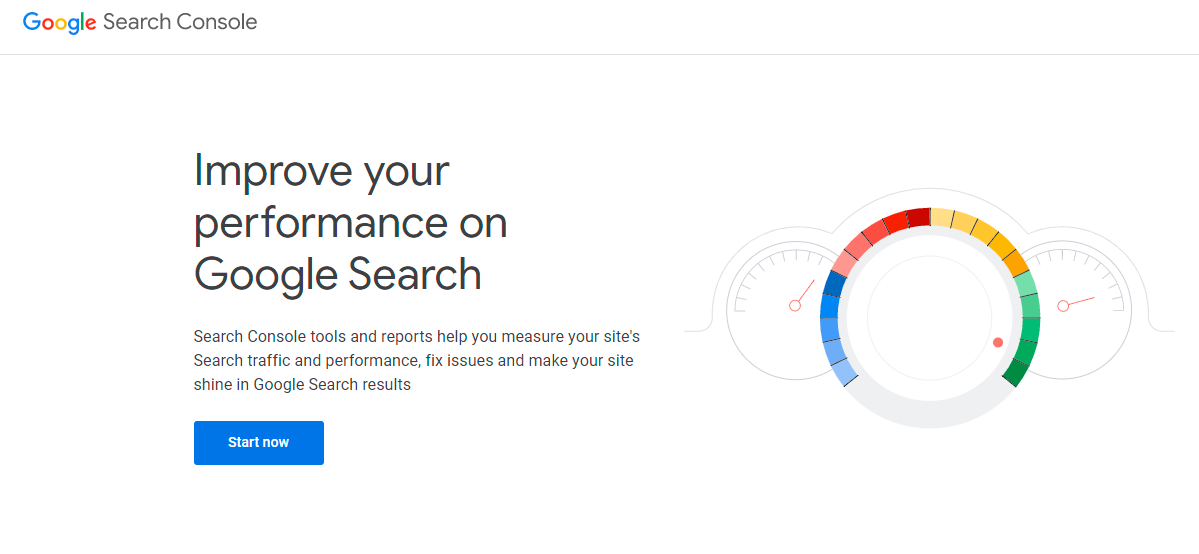
Google Search Console made things easier for users by providing a useful overview of its practices. The console’s operation is straightforward. Your crawl stats will then be divided into three categories:
- Kilobytes downloaded per day: It indicates the kilobytes being downloaded by Googlebots while visiting the website. This basically indicates two important points: If high averages are shown in the graph then it means that the site is crawled more often or it can also indicate that the bot is taking a long time to crawl a website and it’s not lightweight.
- Pages crawled by day: It tells you the number of pages Googlebot crawls each day. It also notes down the crawl activity status whether it’s low, high, or average. Low crawl rate indicates that the website is not crawled properly by Googlebot
- Time spent downloading a page (in milliseconds): This indicates the time taken by Googlebot to make HTTP requests while crawling the website. Lesser the time Googlebot has to spend making requests, downloading the page better it will be as indexing will be faster.
Conclusion
I hope you have got a lot out of this guide on log files analysis and tools used to audit the log files for SEO. Auditing the log files can be very effective for improving the technical SEO aspects of the website.
Google Search Console and SEMrush Log File Analyzer are two options for a free and basic analysis tool. As an alternative, check Screaming Frog Log File Analyzer, JetOctopus, or Oncrawl Log Analyzer to understand better how search engine bots interact with your website; you may use mixed premium and free log files analysis tools for SEO.
You may also look at some advanced website crawlers to improve SEO.



